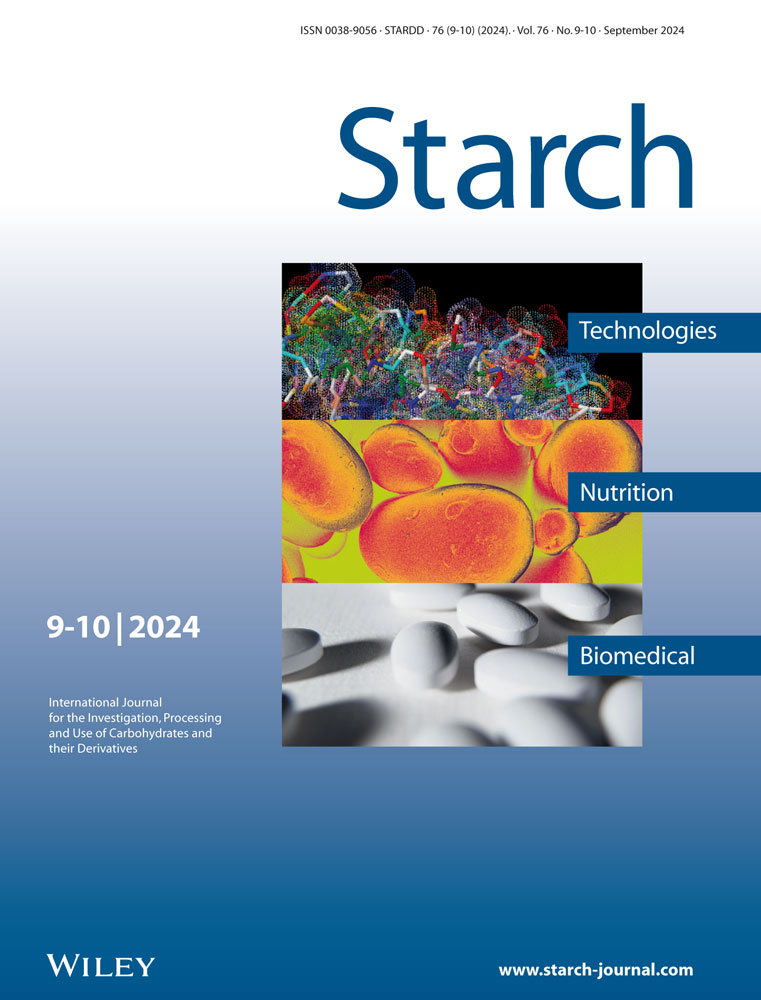Preparation of Multi-Grain Flour with High Content of Resistant Starch and the Mechanism Underlying the Improved Digestion Resistance
Abstract
To acquire the optimum treatment strategy that leads to the highest yield of resistant starch (RS) in multigrain flour (MF), wheat flour, whole oat flour, and whole buckwheat flour are used to prepare antidigestive MF by using pullulanase debranching combining heat–moisture treatment (P-HMT). Based on the single factor tests and response surface analysis, the optimum conditions for the treatment of MF are determined as follows: pullulanase 62.6 U g−1, autoclaving 21.3 min, HMT at 100 °C, and 30.4% water content for 6.0 h. Under these conditions, the yield of RS in the flour reaches 77.42%. P-HMT causes protein denaturation, starch gelatinization, and flour clumps in MF, facilitating starch recrystallization and interactions among short-chain starch, monomeric proteins, and lipids. All these findings are further confirmed by the conversion of starch crystal from A-type to B+V-type, the improvement of starch short-range molecular order, and the presence of more binary/ternary complexes in treated flour. In brief, the starch digestion resistance improvement in the treated flour is attributed to the recrystallization of short-chain starch and interactions between starch and protein/lipid.
Conflict of Interest
The authors declare no conflict of interest.
Open Research
Data Availability Statement
The data that support the findings of this study are available from the corresponding author upon reasonable request.




